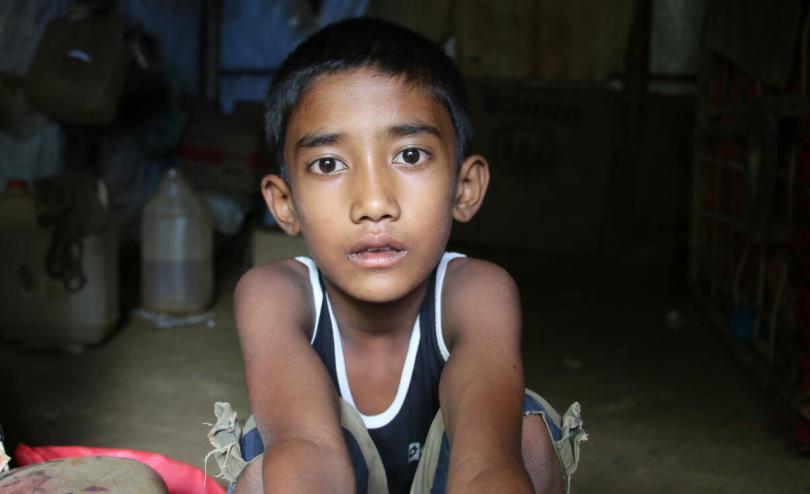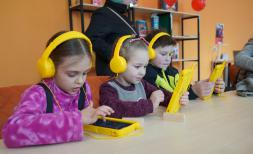CLIMATE CRISIS – Children face life with far more heatwaves, floods, droughts and wildfires than grandparents

Children born over the past year[1] will on average face seven times more scorching heatwaves during their lives than their grandparents under original Paris Agreement emission reduction pledges.
This is according to new research released by Save the Children in collaboration with an international team of climate researchers led by the Vrije Universiteit Brussel (VUB), and also published in the renowned journal Science.
In Afghanistan alone, children could face up to 18 times as many heatwaves as their elders.
Newborns across the globe will on average also live through 2.6 times more droughts, 2.8 times as many river floods, almost three times as many crop failures, and twice the number of wildfires as people born 60 years ago if emissions were to follow the original Paris Agreement pledges.
Children born in Mali could be facing up to 10 times as many crop failures as their grandparents.
Some children might even be hit by several of these disasters simultaneously or in quick succession – exacerbating the effects even further.
Children living in lower-and middle-income countries, as well as in disadvantaged communities, will be worst affected as they are already at far greater risk from waterborne diseases, hunger, and malnutrition, and their homes are often more vulnerable to increased risks from floods, cyclones and other extreme weather events.
Moreover, these climate impacts risk trapping millions more children into long-term poverty and threaten to undo decades of progress in the fight against hunger and stunting.
The data is part of the organisation’s new report Born into the Climate Crisis: Why we must act now to secure children’s rights, and highlights the lifetime exposure to a range of extreme climate-related events on children born in 2020 compared to people born in 1960. The report also outlines the devastating impact of the climate crisis on children if urgent action is not taken, and features first-hand accounts from children in 11 countries on how climate change is impacting their lives, as well as recommendations on how to fight it.
Under the original Paris Agreement emission reduction pledges, global temperatures will rise by an estimated 2.6 to 3.1 degrees above pre-industrial levels—which would have an unacceptable impact on children, Save the Children said.
Under these pledges, children born in 2020 will face on average twice as many wildfires, 2.8 times more crop failures, 2.6 times more droughts, 2.8 times more river floods, and 6.8 times as many heatwaves during their lives than people born in 1960.
The organisation emphasised there is still time to turn this bleak future around. If warming is limited to 1.5 degrees, the additional lifetime exposure of newborns to heatwaves will drop by 45%; by 39% for droughts; by 38% for river floods; by 28% for crop failures, and by 10% for wildfires.
Aslam*, 8, lives with his widowed mother in a Rohingya camp in Bangladesh, where floods have regularly hit over the past months. As their shelter flooded up to their waists, they lost all of their food and had to flee to higher ground. They returned to their shelter, but as the floor was still wet and muddy, they could not cook or sleep there.
“When the floodwaters entered our house, we went up to the hill. Our food, stove, clothes are all wet. We can’t stay at our house because of the wet soil. If the house is rebuilt, we will be able to stay in the house again. We can’t cook rice in the house. Now I will go to [a distribution point] for food. I will bring food from there and then eat.”
Chatten, 16, was just 8 years old when his home in the Philippines was destroyed by Typhoon Haiyan—one of the most powerful tropical cyclones ever recorded—which devastated the country in 2013. Seeing the impacts of climate change first-hand inspired Chatten to become a climate activist, and he now campaigns with Save the Children. He said:
"I've seen the effects of climate change with my own eyes. Typhoon Haiyan destroyed thousands of homes where I live and left many of my friends, relatives, classmates and other people homeless. Even before that, we were already experiencing a lot of climate-related disasters in my region, and each year it gets worse. In recent years we’ve had a drought, extreme heat waves and landslides caused by heavy rains. The months that are supposed to be sunny have become rainy, and the months that are supposed to be rainy are sunny.
To think that children born today will live through even more cyclones, heat waves and other disasters than our grandparents makes me feel sad. Children have contributed least to the climate crisis and yet we're the ones who will suffer the most."
Inger Ashing, CEO of Save the Children International, said: “Our report shows the terrifying reality for this generation and future ones if we don’t act now.
“Children in low- and middle-income countries and disadvantaged communities will be the worst affected, but every child will feel the ravaging impact of this climate emergency.
“The recent heatwaves in the US and Canada, the wildfires in Australia, the recent floods in Europe and China, the multiple droughts, which are driving food crises in places such as Afghanistan, Madagascar, and Somalia, have clearly shown that nowhere is safe. Without urgent action, we will be handing over a deadly future to our children.”
The report also reveals that:
- The impacts of climate change disrupt children’s access to healthcare and education, especially for the already disadvantaged — such as girls, children in refugee communities, children with disabilities and Indigenous children. In Pakistan, for example, after the 2010 floods—made worse by climate change—24% of girls in Grade 6 dropped out of school, compared to 6% of boys[2].
- While children in North America and Western Europe are unlikely to suffer more crop failures, for example, newborns in sub-Saharan Africa will face 2.6 times more crop failures than their elders, and children in the Middle East and North Africa up to 4.4 times more.
Ms Ashing continued: “The climate crisis is a child rights crisis at its core. We need to scrap our dependency on fossil fuels, set up financial safety nets and support the hardest hit people. We can turn this around – but we need to listen to children and jump into action. If warming is limited to 1.5 degrees, there is far more hope of a bright future for children who haven't even been born yet.”
Save the Children said that action on climate change is not only a moral obligation but also a legal one for governments to act in the best interests of children.
Despite this, children are routinely left out of key decisions on the issue, even though it affects their lives most, and for decades to come. Children need to play a key role in decisions on climate change, particularly those impacted by inequality and discrimination, the organisation said. Governments not only need to listen to children but also act upon their recommendations.
Laura, 16, from Chile, said in the report: “We will do our part, raising awareness among our peers, and close adults so that they recognize the problem and become aware of it because alone we will not be able to achieve it. We need joint work and real support from adults, even more so [from] the decision-makers, because today we are at risk […] and without action, we will not have tomorrow.”
To limit the impact of climate change on the lives of millions of children, Save the Children is calling for: a limit on global warming to 1.5 degrees, including by rapidly phasing out fossil fuels; an increase in climate financing to help children and communities adapt to the climate crisis; put children’s voices, demands and rights at the centre of climate commitments; and invest in safety nets for children and families threatened by the climate crisis.
For more information or to set up interviews, please contact:
Natasha Dos Santos, Natasha.dossantos@savethechildren.org / +44 (0)7787 191957
Randa Ghazy, Randa.ghazy@savethechildren.org / +44 (0)7429 980 655
Out-of-hours (BST), media@savethechildren.org.uk / +44 (0)7831 650409
Science is publishing a Policy Forum related to this report, which is also embargoed until 27 September at 00:01 BST. Reporters interested in obtaining a copy should please email the Science Press Package team at scipak@aaas.org (hours Monday-Friday 8 am US ET to 5 pm US ET).
Notes to editors:
Climate researchers led by the Vrije Universiteit Brussels used five sources of data: newly-generated global-scale simulations of climate impacts across six extreme event categories; life expectancy data from the United Nations World Population Prospects; global mean temperature scenarios compiled in support of the IPCC Special Report on Global Warming of 1.5 degrees Celsius; gridded population reconstructions and projections; and country-scale cohort size data provided by the Wittgenstein Centre’s Human Capital Data Explorer.
The research calculates the exposure of an average person to climate impacts across their lifetime in 178 countries, 11 regions and the globe, then compares different age groups to calculate conservative estimates of lifetime extreme event occurrence as a consequence of climate change, while controlling for changes in life expectancy. The study defines current policies as the climate pledges outlined in each state’s Nationally Determined Contributions (NDCs) following the Paris Agreement and in this content considers a scenario with a global mean temperature increase of 2.4°C by 2100. The methods and results are documented in detail in a scientific publication published today in the renowned journal, Science.
Save the Children’s report was developed with the support of a Child Reference Group, made up of 12 children aged between 12-17 years old from Albania, Bangladesh, Chile, El Salvador, Guatemala, Kosovo, Norway, Somalia, Sri Lanka, the United States, and Zambia. The children laid out how the impacts of intergenerational climate change are infringing on their rights to life, education, and protection.
[1] The research compared children born in 2020 to people born in 1960
[2] Women, girls and disasters – A Review for DFID. Available from https://gsdrc.org/document-library/women-girls-and-disasters-a-review-for-dfid.




